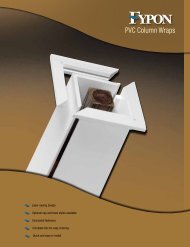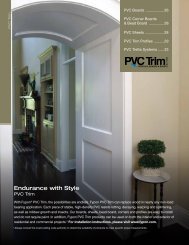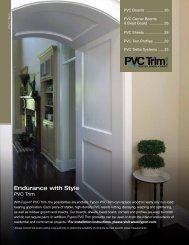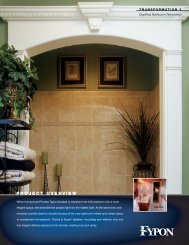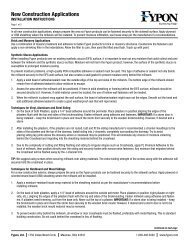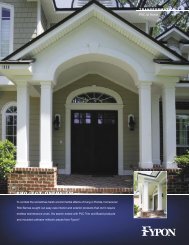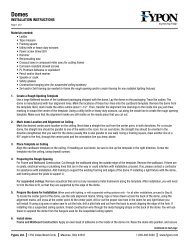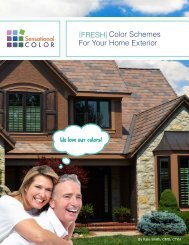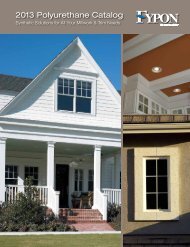Create successful ePaper yourself
Turn your PDF publications into a flip-book with our unique Google optimized e-Paper software.
fixed features<br />
Look at the fixed features of your home and more than likely you’ll begin to see some<br />
repetition of color tones. It is this repetition that allows different materials and textures to all<br />
work well together. When choosing colors for items such as your roof, find a color or variety<br />
of colors that also includes the predominate color or color cast of the existing permanent<br />
elements.<br />
{<br />
Begin With the Largest Fixed Feature<br />
Unless your home is brick or stone, the largest fixed feature is probably the roof, so start<br />
there. Roofing materials are rarely a flat or solid color. Even a standard gray roof often has<br />
a hint of blue, green, or red. Look closely and see what you can detect up close that isn’t<br />
apparent from a distance. With premium roofing products you will usually be able to see the<br />
variations in color even more clearly since they are part of the beauty of the product.<br />
{<br />
UNLESS<br />
you are building a house from the ground up, no home is a blank canvas.<br />
There are many things to consider as you select your colors, with the most influential being<br />
the fixed features. These include items such as:<br />
• Foundation materials: brick, stone, stucco, concrete, etc.<br />
• Roofing shingles: style, color, and material.<br />
• Chimney structures: brick, stone, or stucco.<br />
• Porch, steps, retaining and walkways: brick, stone, cement.<br />
• Decks and patios: wood, brick, concrete, composite, etc.<br />
Your features may be constructed of different materials but they will usually have a common<br />
color or color cast. Once you identify that common color, it is a sure bet that another<br />
element that has the same color, color cast or undertone of that fixed feature color will work<br />
well for your home’s overall color scheme.<br />
Your new colors don’t need to match existing colors, but do need to harmonize with them.<br />
Take inventory of the colors in your home’s fixed features. What color is your roof Are<br />
bricks or stones on your facade Will doors and railings remain their existing colors What<br />
about the window frames The color of each of these areas of your home will become part<br />
of your overall color plan.<br />
{<br />
Evaluate Other Fixed Features<br />
If your home is brick or has a partial brick exterior,<br />
at first glance you might think of the brick as just<br />
red. However, if you take a closer look you’ll begin<br />
to see that there is more to the surface color than<br />
first meets the eye. Many bricks are essentially red,<br />
but have a golden yellow or beige cast. Make note<br />
of both the main color and color cast. Either one or<br />
both of these colors could possibly be included in<br />
the color you choose for your roofing, siding or<br />
accents.<br />
{<br />
If stonework is prominent on or around your home look at the overall color tone first.<br />
Is it gray, brown, green, peach, etc. Next look at what colors stand out from the other<br />
stones. A deep shade of this color might work for your front door or shutters.<br />
The fixed features usually remain the same for the life of the<br />
home. This makes them a better source of color direction for<br />
your siding color, which is likely to change over the years.<br />
7<br />
8



